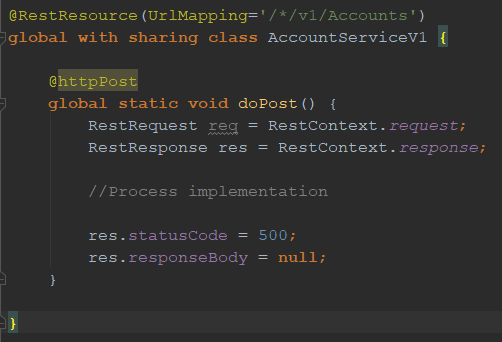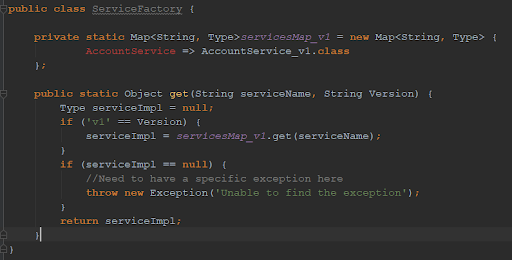The world of technology is always moving forward, and businesses are always looking for new ways to improve their bottom line and streamline their operations. One example of this type of solution is incorporating Microservices and Headless Architecture into salesforce commerce cloud architecture.
In this blog post, we will investigate the ideas of Microservices and Headless Architecture, their advantages, and how they can be combined with Salesforce to produce a highly effective and adaptable system.
- Nearly 82 percent of companies worldwide use microservice to enhance their software solutions.
- Salesforce got some MNCs as their clients, such as Nike, which also uses Microservices.
- Salesforce generated around 22 Billion USD of revenue in 2022.
What is Salesforce Commerce Cloud Architecture
Salesforce Commerce cloud architecture is the backbone of salesforce commerce cloud integration. The term “Salesforce Cloud Architecture” refers to the layout and organization of the Salesforce platform.
In terms of its architecture, Salesforce utilizes something called multi-tenant architecture. With this type of architecture, a single instance of the platform is shared by multiple customers, which results in both scalability and cost savings.
The platform was developed using a Service-Oriented Architecture (SOA), making it simple to integrate it with various other computer programs and operating systems. This is the architecture that helps companies to integrate microservices and headless architectures.
What is Salesforce with Microservices Enabled Headless Architecture
In order to understand the Salesforce B2B Commerce Integration with Microservice-enabled Headless architecture, we have to understand the basic working of the following:
Salesforce
Salesforce is a market-leading platform for customer relationship management (CRM), enabling businesses to better manage their interactions with and data about their customers.
However, if we talk about the architectural structure of Salesforce, then it functions over a monolithic architecture. Now, a monolithic architecture is a single large architecture that stores all the functions and codes.
This image shows an example of a monolithic architecture in a salesforce store.
Microservices
In simple words, Microservices are a type of development architecture. Microservice specifically is service-oriented architecture which can be understood as a hierarchical structure for the workflow of a website’s backend.
In the image above, an Application is utilizing microservices for its primary front end. However, each microservice serves a singular purpose.
For example, if you click on a product on the website and then add it to the cart. These are two specific microservice working very fast for a smooth experience due to their individual code that is highly optimized for that specific task. This can be highly beneficial for Salesforce Commerce Cloud Optimization after integration.
Headless Architecture
A software architecture pattern known as headless architecture is one in which the front-end and back-end of an application are separated from one another. This is like a branch of Microservices itself, as it also enables the separation of different components for specific functions.
In simple words, when a salesforce store is shifted to a microservice architecture from the typical monolithic one that is known as Salesforce with Microservice enables headless Architecture.
Why Microservice With Salesforce Specifically?
Salesforce and Microservices are powerful for businesses looking to streamline their e-Commerce operations. Salesforce Cloud Commerce architecture provides many utilities for companies to manage their online stores and units, but it sometimes falls short for organizations looking to grow at a faster pace.
Adopting microservices in Salesforce can greatly enhance the flexibility and scalability of the platform. By using microservices, companies can create custom services tailored to their specific needs and integrate them into their current architecture. This gives companies more control over their architecture and the ability to decide the features and bandwidth required.
Why Should Businesses Shift Their Salesforce To A Microservice Enabled Architecture From A Monolithic One?
Improved Team Collaboration
Microservices make it possible for teams to work on separate aspects of an application independently, which improves teamwork and cuts down on the number of dependencies that exist between the teams.
For instance, a company might have one team devoted to the development of a user authentication service while another team is dedicated to the development of a payment service. These teams are able to work in parallel without interfering with one another, which improves collaboration and reduces the amount of time needed to bring the product to market.
Better Resource Utilization
By assigning particular services to particular pieces of hardware or cloud instances, microservices can assist businesses in optimizing the use of their available resources.
If a company decides to run its database service on high-performance hardware while simultaneously running other services on cloud instances that are more cost-effective.
Improved Security
Microservices can offer improved protection for sensitive data and reduce the likelihood of security breaches thanks to their ability to isolate services and the data they generate.
A company might, for instance, decide to encrypt sensitive data that is stored in a microservice or to separate a service that manages sensitive information from the rest of the application in order to improve its level of security.
Enhanced Testability
Businesses have the ability to test each service independently with the help of microservices, which increases the overall testability of the application. For instance, a company may decide to write unit tests for each microservice in order to guarantee that each service is operating appropriately before it is combined with the rest of the application.
Greater Flexibility in Deployment
Microservices offer greater flexibility in terms of deployment because they can be run on a variety of platforms. These platforms include public clouds, private clouds, and on-premises environments.
If a company decides to deploy certain services on a public cloud in order to save money, they deploy other services on a private cloud in order to increase the level of protection for those services. Because of this flexibility, businesses are given the opportunity to select the most suitable deployment option for each service, thereby optimizing factors such as cost, performance, and security.
What are the Limitations of Salesforce’s Monolithic Structure
Following is the list of limitations of salesforce commerce cloud architecture’s Monolithic Structure:
Scalability
The increase in the size of the application and the number of people using it can cause monolithic architecture to become a bottleneck.
For instance, if the number of users and transactions that take place on a centralized e-commerce platform continues to grow, the platform may become sluggish and unresponsive. This can result in a negative experience for the end user and, as a consequence, a loss of business.
Complexity
Because of the tightly coupled nature of monolithic architecture, it can be challenging to add new features or make changes to an application without affecting other components of the software.
If a modification is made to the payment processing module of a monolithic application, it may have an effect on the inventory management module, despite the fact that the two modules are not directly related to one another.
Inflexibility
The monolithic architecture is not easily adaptable to shifting business requirements, and adjusting to shifting market conditions can be challenging when using this type of architecture.
If a company makes the decision to enter a new market or launch a new product, the monolithic application may only be adaptable enough to accommodate these changes after undergoing a significant rewrite.
Maintenance
A large, complex, and monolithic application can be difficult to maintain, which can be both time-consuming and expensive and requires a significant investment in both technical resources and infrastructure.
For example, fixing a bug in a monolithic application can be a challenging and time-consuming process. This is especially true when the bug is associated with a fundamental part of the application. A process that involves upgrading or updating the application can also be difficult and demanding of many resources.
Implementing Microservices With Salesforce
The implementation process doesn’t require any Salesforce Commerce Cloud Migration. It is only related to building the microservices and integrating them within the salesforce commerce cloud architecture. Following is the step-by-step way to implement microservice in salesforce commerce cloud architecture.
Define The Business Requirements
The first thing that needs to be done in order to start implementing microservices with Salesforce is to identify the specific business needs that will be met by the microservices. For instance, a company might require microservices in order to enhance the customer experience by minimizing downtime, maximizing efficiency, or simplifying the process of checking out customers’ purchases.
Establishing these requirements enables the prioritization of the development of microservices and ensures that the latter is tailored to the company’s particular requirements.
Identify The Microservices
After the business requirements have been figured out, the subsequent step is to determine the various kinds of microservices that are going to be necessary in order to fulfill those requirements.
If the company needs an improved method for customers to pay for their purchases, a payment processing microservice could be developed. In a similar vein, if the company determines that it needs improved customer service, it may decide to develop a customer service microservice.
Choose The Technology Stack
A crucial step in the process is choosing the technology stack that will be applied when putting the microservices into action. Scalability, data security, and seamless integration with Salesforce are some of the criteria that should guide the selection of the technology stack.
If the company requires a solution that can be scaled, a technology stack like AWS or Google Cloud could be selected as the appropriate option.
Build The Microservices
The following step entails utilizing the chosen technology stack to create the individual microservices that will be used. Each microservice ought to be able to function on its own, be self-sufficient, and be capable of being independently deployed and maintained. As stated above, the payment processing microservice needs to be able to operate independently of the other microservices in the system.
Integrate With Salesforce
Integrating microservices with Salesforce is necessary by making use of APIs if one wishes to achieve a seamless user experience. As a result, this offers a comprehensive solution as it enables data to be transferred between the microservices and Salesforce.
The only way to integrate microservice with salesforce is via an API. However, the standard API will be useless because it will change the interface within the metadata. Hence opting for ApexREST will be the best option for this implementation.
Following is the Step by Step guide to Salesforce Commerce Cloud Implementation with microservice using the REST API:
Step Number 1: Create a Service Interface
In this section, the developer will create a REST API resource for you, which will be the account service with “request” and “response” processes.
Step Number 2: Integrate via Interfaces
After you have implemented the service interface, it is time to integrate them via global interfaces so that it is implemented throughout the website.
Test And Deploy
Before deploying the microservices, it is essential to perform comprehensive testing to ensure that they function as intended. This guarantees that any problems will be found and fixed before deployment. After passing the testing phase, the microservices can be introduced into the production setting.
Monitor And Maintain
It is essential to monitor the performance of the microservices and the integration with Salesforce to guarantee that they will continue to satisfy the needs of the business.
It is also necessary to perform routine maintenance to guarantee that the microservices will continue functioning properly and securely. For instance, the microservice that handles customer service could be monitored to ensure that it continues to deliver the desired customer experience.
Conclusion
Now you know all the details about the salesforce commerce cloud architecture and how it can help you implement microservice with Salesforce. We have also provided a step-by-step guide for you to try it. However, we recommend you opt for a salesforce commerce cloud development company and connect with a salesforce commerce cloud consultant, or Salesforce Commerce Cloud Support can guide you better.








